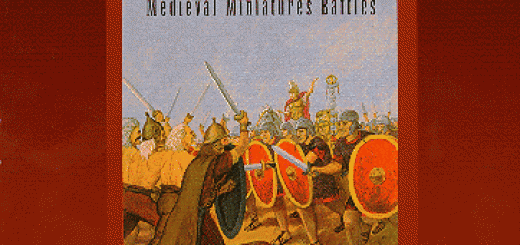Combat at Osma
Solo game based on the “Victoria” scenario book from TooFatLardies. I decided to test my amended Shadows of the Eagles rules. The amendments are in fact fully based on the new rules that the designer, Keith Flint, kindly put on the Web, my only interpretations are about skirmishers, combat of lines versus columns and the movement of unit that support a charge.
My amendments foresee that only one unit may attack an enemy unit side, so I added the possibility that additional units may support the charge (by moving and firing). There is no bonus in melee for being supported so the only way to have adjacent units contribute is to support the charge by moving and firing to the enemy. This rule has been defined to disincentivate the attacks of phalanxes of units built with an array of multiple columns.
The other amendment is a simplification of the mechanism of columns charging a line. Keith states that a smart column charge might hit the enemy line is such a way that the line will be in contact with les than the unit’s front, so it will halve dice.
I simplified the mechanism by saying that halving of the dice are done when half or less (originally less than half) of the unit’s front is contacted., i.e. as in the case of a column contacting any point of a line.
The other advantage I gave the attacking column is that it fights with 3 dice instead of two on the first melee, so it will have a slight advantage in attacking a line which will fight with 2 dice, only in the first round of melee. Three combat dice I believe were assigned to columns in some earlier version of the rules.
The melee will happen only if the line does not stop with fire the enemy column. In this case the column is disadvantaged since it fires using 2 dice against 4 of the line, but it will fight slightly better in case it goes in melee. Overall a column attacking a line will always have some disadvantage.
A short summary is that it is good for a column to attack a line only if the enemy is inferior or so weak that it will not cause much damage by fire and only in case there is a need to attack quickly at high speed and move on, not spending time to change to a proper formation, to line.
In all other cases it is alway convenient to advance in column, then deploy in line at safe distance and then attack. If the enemy is smart and cause the column to advance too much, the column will be too close, not able to change to line formation and the unit will be forced to a column attack, or retreat.
Everything becomes so clear now, about what happened in many fights between British and French, by using Shadows of the Eagles with some little amendments! Many thanks to Keith who has provided a very robust game mechanism, I hope he will not be displeased by my home rules.
After this test game, I plan a more important test of Keith’s new rules (an my little amendments) during a similar size game with my good friends from Rome.
Here some photos of the first four moves of the game.























Fourth move to go. The game is ten turns long




Very nice Stefano. Regarding company columns charging, don’t forget that there is already a +1 charging modifier for any unit.
Dear Keith, thank you for reminding me. Indeed it might be sufficient to get some bonus for a charging column. Also, I had noticed that in previous versions of your rules, column combat dice were three and I felt more comfortable with them. I will decide based on some more game experience and discussions with my gaming friends.